What symbol better captured the ambiguity of late-'60s America than a stoned biker on a stars-and-stripes-painted chopper? On the one hand, Captain America epitomized the American ideals of individuality, self-expression and the freedom of the open road. On the other, it mocked everything upstanding Americans held sacred. This was long before the advent of "Rich Urban Bikers," when only drug-dealing Hell's Angels and other assorted mother-stabbers and father-rapers (apologies to Arlo Guthrie) rode choppers. As George Hanson (Jack Nicholson's character) explained in Easy Rider, "They're gonna talk to you and talk to you and talk to you about individual freedom, but they see a free individual, and it's gonna scare them." When square film audiences first saw Captain America streak across the screen in the summer of '69, it scared the hell out of them.
The film featured two choppers: Peter Fonda's iconic Captain America machine and the lesser-known, red-and-flamed "Billy Bike" ridden by co-star Dennis Hopper. Both bikes were conceived by Fonda and constructed by African-American bike-builders Cliff Vaughs and Ben Hardy of Hardy Motorcycle Service in Los Angeles. The pair built four choppers total-two of each style-from a quartet of retired LAPD Harley-Davidson FLs purchased at auction for $500 each.
Billy's bike was the milder of the two, with almost-stock frame geometry, but Captain America was outrageous even by Southern California standards. Jim Buchanan at Buchanan's Frame Shop cut and raked the head tube to a radical 45 degrees, and extended the Wideglide forks 12 inches over stock. Dog-bone bar-risers held 13-inch ape-hanger handlebars, and a 3-foot sissy bar and upswept fishtail exhausts completed the over-the-top look. Paint was by Dean Lanza, following Fonda's directive to "make it look just like Captain America's shield." Everything else was chromed.
Hollywood stuntmen Tex Hall and Dan Haggerty (later of Grizzly Adams fame) were tasked with maintaining the four Panheads, and not one of the bikes survived through the end of filming. One Captain America was destroyed in the final scene, as the script demanded. The remaining three bikes were stolen from an L.A.-area warehouse before filming concluded. In fact, the bikes are mysteriously absent from the movie's final campfire scene, which was shot after the theft.
Though replicated many times since, the stolen bikes were never recovered-only adding to the legend and mystique surrounding these iconic machines. Even their creator seems pleased with this fate: "I like the idea that in a variety of places around the country, folks are riding parts of those bikes," Peter Fonda was quoted as saying in the Guggenheim Museum's "Art of the Motorcycle" exhibit catalog, which prominently featured a Captain America replica. "Underneath some metal-flake painted tank somewhere, there are stars and stripes. And the owner doesn't have a clue."
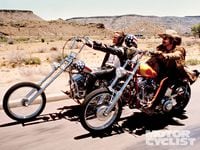
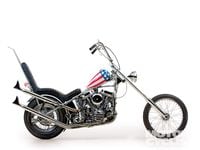
/cloudfront-us-east-1.images.arcpublishing.com/octane/HT5PNEQC7VDXZHNYECPSKSYGTU.jpg)
/cloudfront-us-east-1.images.arcpublishing.com/octane/VN63PLIOMJCDJC3PWLIJQI5YHQ.jpg)
/cloudfront-us-east-1.images.arcpublishing.com/octane/SYIS3UGL7BGB5NEN5GSIVSFISM.jpg)
/cloudfront-us-east-1.images.arcpublishing.com/octane/H2NJJMCBSZCVHNDOGUQILJFMX4.jpg)
/cloudfront-us-east-1.images.arcpublishing.com/octane/K25WVPRMCVEDZJ7ZJK4BWE374Y.jpg)
/cloudfront-us-east-1.images.arcpublishing.com/octane/TQQGTGULURF5TOSK4FHQX7QKWY.jpg)
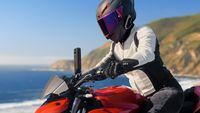
/cloudfront-us-east-1.images.arcpublishing.com/octane/THZ26BIH45AYBHU6WB527JTTCU.jpg)
/cloudfront-us-east-1.images.arcpublishing.com/octane/7OWQWAWJBFCGTAYQWBMWGNMNB4.jpg)
/cloudfront-us-east-1.images.arcpublishing.com/octane/4G5XKCDIHRCGRHVF7OPORG7ZX4.jpg)
/cloudfront-us-east-1.images.arcpublishing.com/octane/D2BDYKKNZ5GRHGDMI4PZTGRMME.jpg)
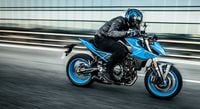
/cloudfront-us-east-1.images.arcpublishing.com/octane/UAY4WSZPOFDQRP4MCEXAKDFQOQ.jpg)
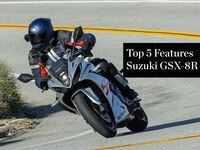
/cloudfront-us-east-1.images.arcpublishing.com/octane/X5CE3KSJHZHM5CUFGPZ7U26WB4.jpg)
/cloudfront-us-east-1.images.arcpublishing.com/octane/COWLTPGFAFGDDGJCTENYMA4VJM.jpg)
/cloudfront-us-east-1.images.arcpublishing.com/octane/H3PKUGPSUJFTND4RFPSI4OIDCE.jpg)
/cloudfront-us-east-1.images.arcpublishing.com/octane/UHGQA3MQDFCA3HLBWF7S76WH6Y.jpg)
/cloudfront-us-east-1.images.arcpublishing.com/octane/Q5EORCSTNFAVBJC4IYUHIKJTXQ.jpg)
/cloudfront-us-east-1.images.arcpublishing.com/octane/XIJ5FUFSP5A3NL7MOVZGJXAHC4.jpg)
/cloudfront-us-east-1.images.arcpublishing.com/octane/V5NZN3CGS5B5PPYFYJHIPAU5S4.jpg)
/cloudfront-us-east-1.images.arcpublishing.com/octane/CZE6ONOBU5E7HPIEEADU376C4M.jpg)
/cloudfront-us-east-1.images.arcpublishing.com/octane/UT4KL3SIYJBSPNHWJXTBE6MTGE.jpg)
/cloudfront-us-east-1.images.arcpublishing.com/octane/Q3UOIDZ22ZEVDBZUWGJXIMGJKI.jpg)